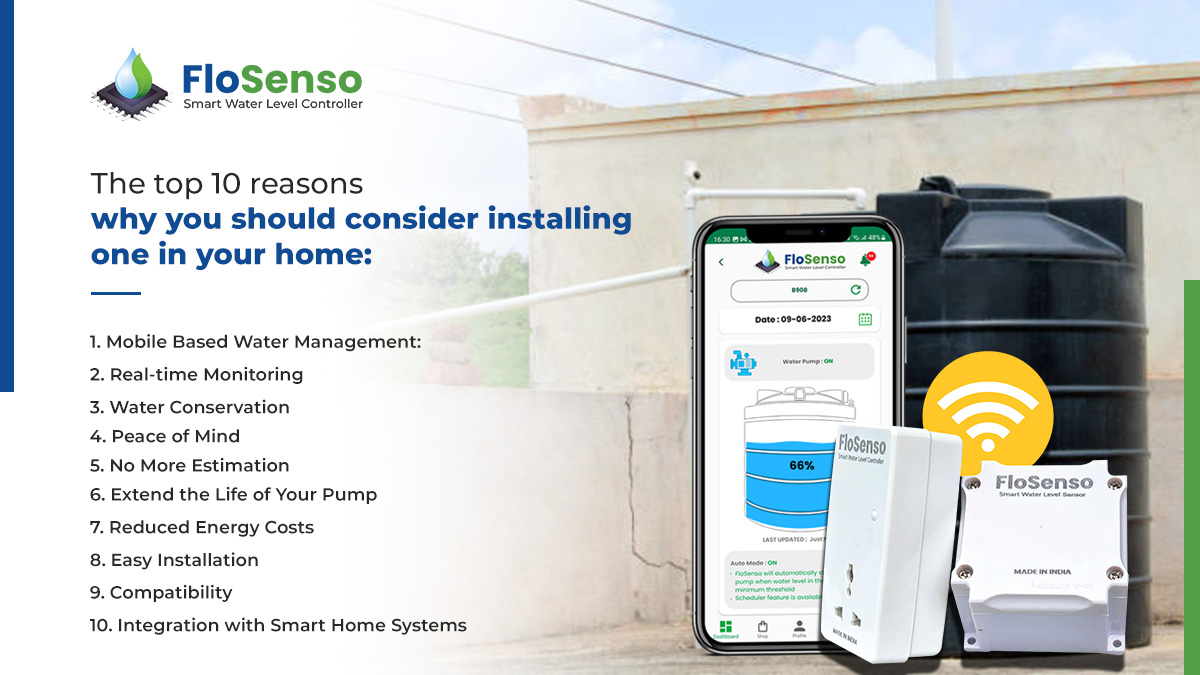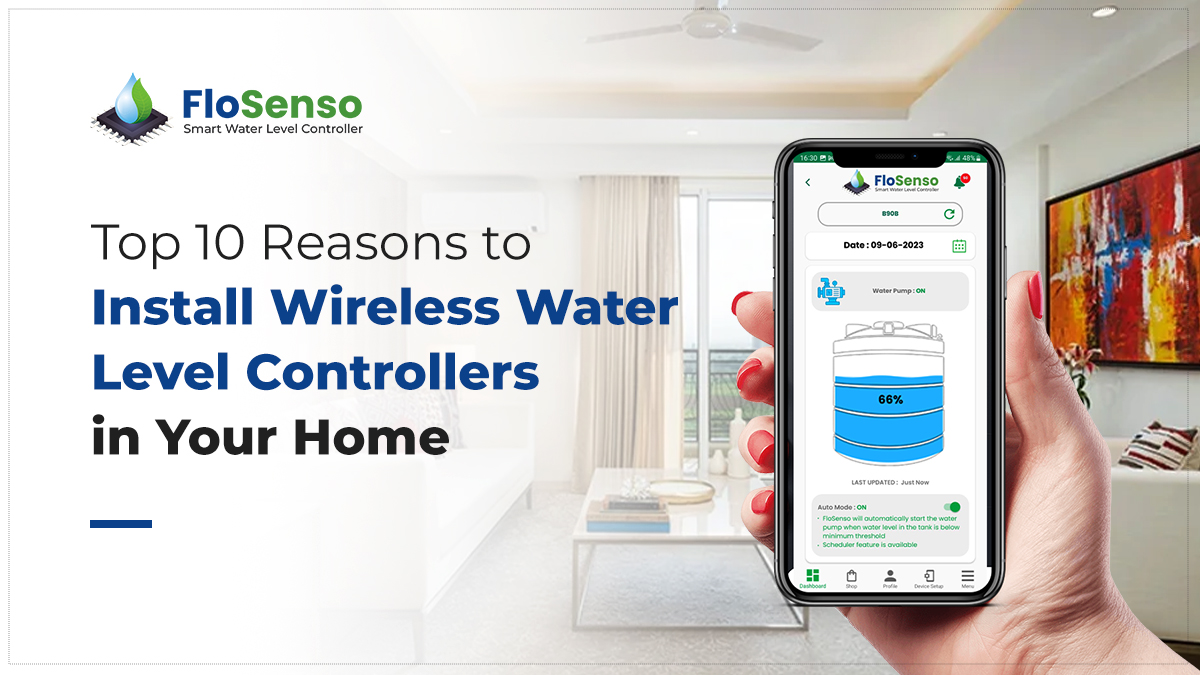When it comes to our homes, we often take water for granted. Since it is easily available whenever we turn on the tap, we tend to neglect the overflowing tanks and wastage of water. According to a study, water wastage in India is 30 trillion gallons/year! On average one person wastes about 0-45 liters of water per day. To understand it better, it is 30% of water requirement per person per day. 125 million liters of water wasted daily.
However, there’s a simple and ingenious solution that can enhance your water management, reduce wastage, and make your life more convenient. WiFi water level controllers! These innovative wireless water level indicators are changing the game when it comes to efficient water management at home.
Here, we discuss the benefits of wireless water level controllers and give you reasons to install them at your home.
Wireless Water Level Controller
Installing a WiFi water level controller in your home is a smart and eco-friendly choice. It not only simplifies water management but also promotes water conservation, saving you money and reducing your environmental footprint. In a world where water is becoming an increasingly precious resource, wifi water level indicators offer a practical solution to ensure you use this vital resource efficiently.
Wireless water level controllers find applications in various sectors, including residential water tanks, industrial processes, agriculture for irrigation systems, and in municipal water management for water distribution and storage systems.
Components of a Wireless Water Level Controller
Sensors: These devices are placed inside the water tank or reservoir and are responsible for measuring the water level. They can be of different types such as ultrasonic sensors, float sensors, or pressure sensors. The sensors detect the water level and send this information to the control unit.
Control Unit: This unit processes the data received from the sensors. It contains a microcontroller or a central processing unit that analyzes the water level information and determines the necessary actions, such as turning on or off the water pump or valves.
Wireless Communication: The wifi water level indicator uses wireless technology to transmit data between the sensors and the control unit. It could be based on various wireless protocols like Wi-Fi, Bluetooth, Zigbee, or other RF (Radio Frequency) communication methods. This allows for remote monitoring and control without the need for physical connections or wiring.
Actuators: Based on the data received from the sensors and processed by the control unit, the wireless water level controller can trigger actuators, such as solenoid valves or water pumps, to fill the tank and maintain a desired water level.
User Interface: The user interface (Mobile/Web App) in smart water systems plays a pivotal role in facilitating user interaction, enabling control, and providing valuable insights. It serves as the bridge between the user and the complex functionalities of the system.

Why consider a Wireless Water Level Indicator?
Here are the top 10 reasons why you should consider installing one in your home:
- Mobile Based Water Management: Wireless water tank level indicators allow you to monitor and manage your water tanks remotely, using your smartphone. You can check the water level anytime and anywhere.
- Real-time Monitoring: Stay informed about your water tank levels 24/7. Receive alerts when the water levels are low, so you can take timely action to refill the tank, preventing inconveniences.
- Water Conservation: Save water and reduce wastage by knowing exactly how much water you have at any given time. This awareness empowers you to use water judiciously, especially during water scarcity.
- Peace of Mind: With wireless water level controllers, you can schedule the timing of your pump operations without worrying about the water supply. You’ll always know the status of your water tanks, ensuring a stress-free absence.
- No More Estimation: Say goodbye to the unreliable guesswork method. Wireless controllers provide accurate, digital readings, eliminating guesswork and potential errors.
- Extend the Life of Your Pump: These devices automatically switch off your pump when the tank is full, preventing overflows and pump damage. This not only saves water but also extends the life of your equipment.
- Reduced Energy Costs: By preventing your pump from running unnecessarily, you’ll also save on electricity bills. Wireless controllers can optimize pump usage, resulting in energy cost savings.
- Easy Installation: Most WiFi water level controllers are user-friendly and easy to install. You don’t need to be a tech wizard to set up and use these devices.
- Compatibility: These controllers are compatible with various types of water tanks, including overhead tanks, underground tanks, and sump tanks. No matter the design of your water storage, there’s a solution for you.
- Integration with Smart Home Systems: These wifi water level indicators often integrate seamlessly with smart home systems, allowing you to control and monitor tank water levels using your smartphone or other smart devices.
The future of water level controllers is bright, promising a convenient and sustainable change in lifestyle. As smart home technology evolves, wireless water level controllers are set to become more advanced, integrating with AI and IoT ecosystems. These devices will offer predictive analytics, automating water management based on weather patterns and usage trends, significantly enhancing efficiency and contributing to a more sustainable future.
Get Smart with Smart Water Control
Consider FloSenso, the IoT-based automatic water tank level controller (Wi-Fi based and mobile app operated) that simplifies water management! The ultrasonic sensor based FloSenso automatic water level controller springs into action the moment your tank’s water level hits the minimum threshold, initiating automatic refilling of the tank, and ensuring a steady water supply without any manual intervention. Set schedulers through the dedicated app and free yourself of manual water monitoring while also enabling remote operations. Experience the convenience of automated water management and stay connected to your water system from anywhere!











